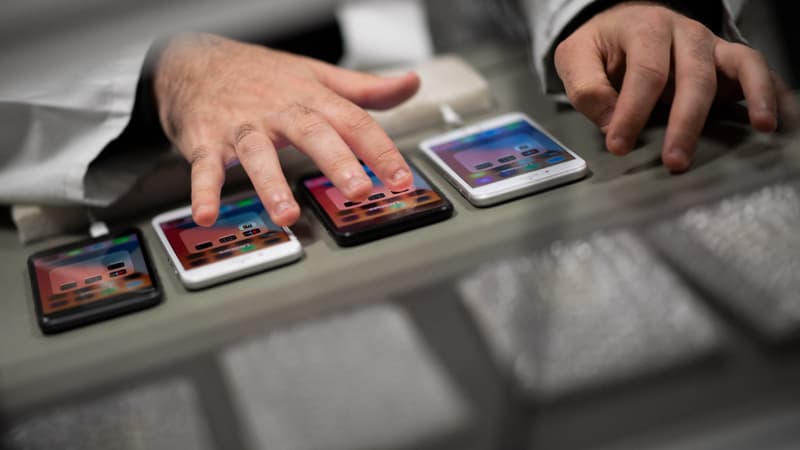On September 12, 2023, the National Frequency Agency (ANFR) asked Apple to stop marketing the iPhone 12, due to a level of wave emission higher than European regulations. A warning that does not seem linked to a real danger to the health of the Apple device (and does not refer to the emissions of waves directed towards the head), but which may revive the fears of some users. Here are some basic tips for those who want to limit their exposure to the airwaves from their mobile.
It works
1. Move the device away from your ear
When it comes to wave exposure, every millimeter counts. By moving the smartphone away from the ear, it is possible to dramatically reduce the impact of emissions on the brain. Therefore, the most effective method remains to opt for headphones/earphones, wired or Bluetooth, which emit much fewer waves than the smartphone. In the absence of suitable equipment, using the mobile sound speaker will also be very effective, provided it is in a suitable environment.
Note that the peak of wave emissions occurs when the call is made to a correspondent. At this point, the phone will interact with nearby cell towers to establish a connection. If conditions require bringing the mobile phone closer to your ear, it is strongly recommended to wait until the first ring tone is emitted – once the connection has been established – to bring the smartphone closer to your cheek, if possible without sticking it to the surface of the skin. .
2. Pay close attention to network quality.
And depending on the conditions of appeal, the differences can be immense. According to recent calculations published by the National Frequency Agency (ANFR), the number of waves emitted by a smartphone used in a difficult environment can be multiplied on average by 32,000, compared to the number of waves emitted by a device used in ideal conditions. .
Therefore, it is essential to ensure that you have good reception before making a call. In contrast, calling from a location where the network is poor or in a moving vehicle (for example, on a train) carries maximum exposure to waves.
3. Limit call duration
what doesn’t work
1. Bet everything on DAS
As a reminder, this figure is a maximum value. But with good components – especially in terms of antennas – and good network management, a mobile phone with a high peak emissions (symbolized by the SAR) can guarantee a moderate level of daily average emissions. Therefore, the DAS is not the most relevant element to limit exposure.
2. Most anti-wave accessories
In more difficult conditions, these patches can effectively block the emissions of electromagnetic waves, but then they have negative or even counterproductive effects: the quality of the call is greatly affected, which pushes the smartphone to emit even more waves.
Source: BFM TV


